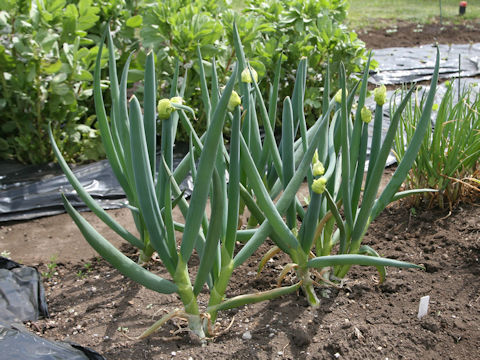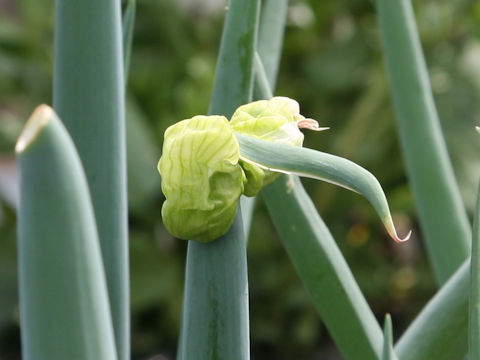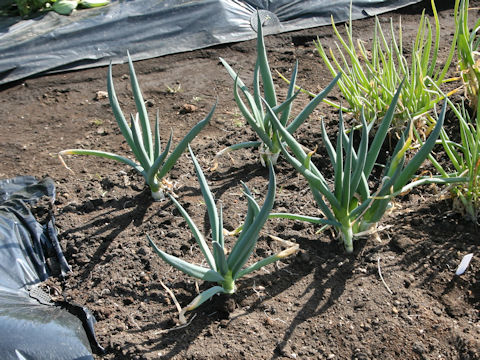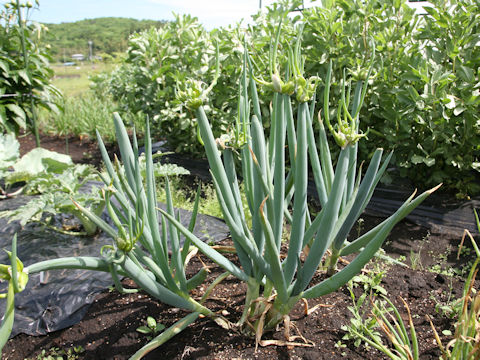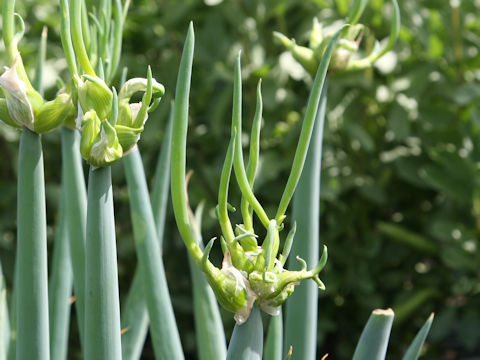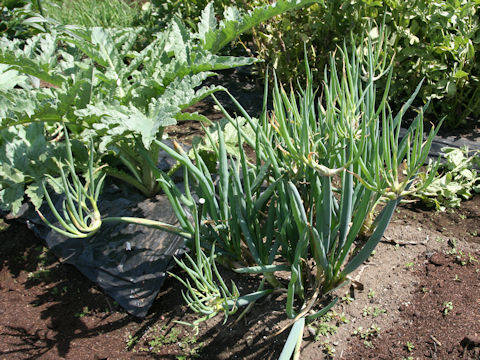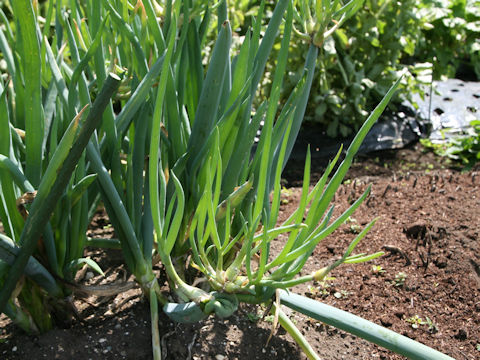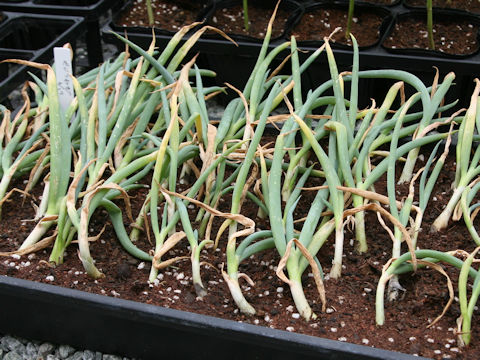
|
The "Yagura-negi" (Allium fistulosum var. viviparum) belongs to Liliaceae (the Lily family). It is a perennial herb that is variant of the "Welsh onion" distributed from western China to Siberia. It is believed to have been selected artificially, rather than naturally differentiated. It has been described in China since ancient times, and in Japan, it can be found in documents dating back to the mid-18th century, and was given this Japanese name because the "bulbils" that form at the top of the scape around May resemble a yagura (tower). In summer, the leaves wither and the shoots fall to the ground and take root, and when the shoots grow large, they are eaten again as welsh onions. The leaves are dark green and tender, and the white leaf sheaths make a delicious, spicy welsh onion. It is also known as "Nikai-negi", "Sangai-negi", "Karuwaza-negi", etc. This "Yagura-negi" is a cold-weather type of leek that goes dormant in winter, and is most commonly grown in the southern Tohoku region, and also grown only slightly in the Kanto, Hokuriku, and San-in regions.
|
